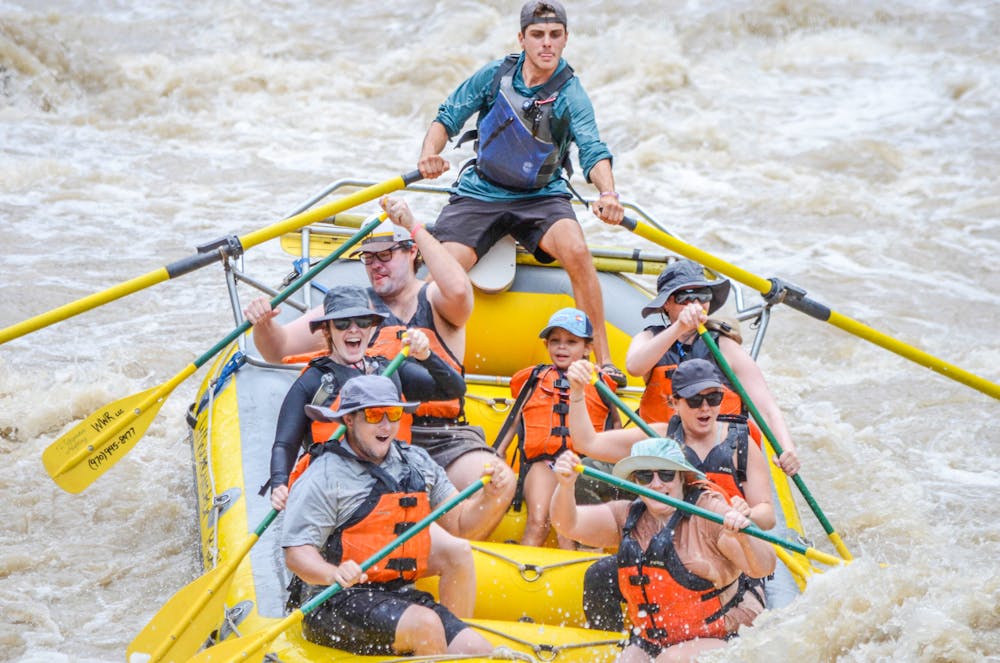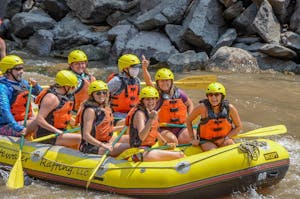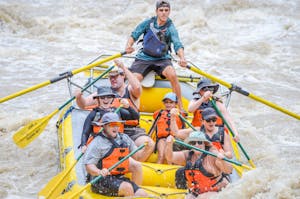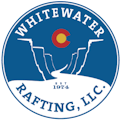Tips For Whitewater Rafting Beginners

If you’re planning on whitewater rafting for the first time, you can do a few things before your adventure to make the experience safer and more fun, even before you go down the river. This blog breaks down the best way to prepare for your first whitewater rafting trip into two parts: initial planning and what to do once you get on the raft.

Planning Before Your Rafting Trip
Planning is critical in the weeks and months leading up to your first whitewater rafting experience. While whitewater rafting is a fun outing, it can also be dangerous at times, so safety is paramount. Making the right decision at an early stage can clarify all issues. Let’s take a closer look at some essential pre-planning considerations:
Finding the Best Rafting Guide
The first step in planning a whitewater rafting trip is to choose a professional guide for your summer excursion. Choosing the right guide can make or break your rafting experience. Experienced whitewater rafting companies know the local river and provide the proper safety and first aid equipment, such as helmets and life jackets. Rafts, paddles, and other equipment should be quality and properly maintained. Many companies also offer equipment rentals such as wetsuits and dry bags.
Picking the Right Rafting Trip
Choose a travel package that suits the age and ability of your group. Rafting companies should have various trips, so talk to your outfitter about what’s best for you. Plan early and book in advance to ensure you get the trip you want. Also, remember that trips in late spring and early summer offer more aggressive rapids, while late summer offers calmer waters.
Get In Shape for Paddling
Whitewater rafting is a fun, exciting adventure but requires a lot of paddling. Plan a good exercise program for your arms, shoulders, back, legs, and core. If you want to do pre-trip workouts, here are a few areas to focus on:
- Stretching: Plan extensive stretches. Spend 5 minutes stretching at the beginning and end of each workout. Flexibility and strength are equally important when whitewater rafting, as you will be twisting and turning during your paddling.
- Cardio: Cardio and high-intensity interval training prepare you for the demands of the river. Exercises such as burpees, elliptical machines, jogging, skipping, spinning, and lap swimming are great ways to get proper burpees and build cardiovascular fitness. Feel the burn and increase your stamina. You’ll thank us later.
- Muscle memory: Do push-ups, pull-ups, and chest presses to develop the muscles needed to paddle. Upper body training is vital, but some planks and side planks work the muscles you need to lean against in the row. Training your legs with front and rear lunges and squats can improve your overall strength.

Packing for Your Rafting Trip
Pack light when you head to the mountains for a whitewater rafting trip. Apart from your standard vacation gear, there are only a few essentials. Here are the must-haves for a whitewater adventure in your suitcase:
- Swimwear (one-piece swimsuits are recommended for women)
- Comfortable shoes (preferably an older pair of shoes or sandals. Avoid Crocs and flip-flops.)
- Socks (recommended to avoid sunburning your feet)
- Sunscreen (Use an SPF 50 or higher sunscreen and reapply early and often. Reapplying at least every two hours is recommended. “Waterproof” sunscreens must be reapplied every 45-90 minutes.)
- Sunglasses (with a strap)
- Towel
- Water bottle (preferably two 32-ounce bottles. Many rafts have spots to clip your water bottles in, so bring your snap hook.)
- Dry clothes for afterward
- *Optional: Wear a lightweight shirt with a UV Protection Factor (UPF) of 30 or higher for added protection.
It’s a good idea to pack waterproof layers so you can add and remove layers as needed. Loose-fitting clothing such as fleece and microfleece, wool, polyester, and polyester blends are recommended as they dry fast. Avoid cotton clothing and anything with a hood, such as a raincoat or a poncho.
Tips for Your Day on the River
When you reach your whitewater destination, it’s time to jump on the raft. If you’ve followed our recommendations up to this point, you should be in good shape (both literally and metaphorically). When you arrive at the rafting put-in, things will progress quickly as you prepare for launch. Here are a few tips as you get ready to head into the water:
If You Need Additional Gear
You can rent additional items such as water shoes, wetsuits, and dry bags from your guide company. Wetsuits can provide extra warmth in colder waters, and you can use dry bags to keep your gear and other valuables dry on the river. It’s best to keep jewelry, watches, wallets, and cell phones away from the raft.
Listen to Your Guide
Follow your guide’s lead. They are experienced and know the river very well. Stay alert and listen to what your guide has to say. They may share valuable tips and tricks before entering the rapids. An experienced guide will teach your group some commands to use on the water. Keep your eyes and ears open, communicate, and get ready to have a good time! If you have other questions, now is the time to speak up.
Along the way, your guide can share stories and the history of whitewater rafting in the area. Often, these stories are one of the best parts of the journey. Be friendly and keep a positive attitude; you should have an unforgettable experience.
Always Double-Check Your Gear
Your outfitter and guide should equip you with a life jacket and helmet. They will also provide you with safety gear and paddles. Your buoyancy aid must fit snugly against your body so that it does not go over your head. While some rides do not require helmets, it is best to always wear a helmet.
Paddle Like a Pro
You can also get a T-handle paddle on most excursions. Before you set off, your guide should give you paddling tips and tell you what to expect during the trip. They will explain paddling and how to work as a team. They even explain the procedures if someone falls out of the raft. Every capable rafter must work to move the raft downstream. When you work in unison, it’s surprisingly easy to do!

Rafting Tips Summary
It doesn’t matter if you’re on summer holiday or just day-tripping, whitewater rafting is a fun and exhilarating outdoor activity that’s fun for the entire family, no matter your ability or experience level. Rafting is no longer just for the hardcore adrenaline junkie; the popular summer activity is more mainstream now than ever. There are currently more than a dozen commercially rafted rivers in Colorado. The state provides endless rafting options from April through early October in every corner of the state and right in the middle! Some of the best whitewater rafting is less than 45 minutes from downtown Denver.
Following these tips will ensure that your whitewater experience is the best and that you can reflect on it positively for years to come. By doing these essential tips and listening to your guide pros during your rafting excursion, you can safely experience the majesty of nature, the roar of the river, bluebird skies, and the unforgettable thrills and scenery of whitewater rafting.
